How to sew a cover on the sofa yourself: step by step instructions
Upholstered furniture is quite expensive, because it is logical to strive to keep its beauty, novelty and cleanliness as long as possible. The best solution is to stitch the cover onto the sofa. It is often used not only to protect against pollution, but also to ennoble old kitchen chairs or couches on the terraces.
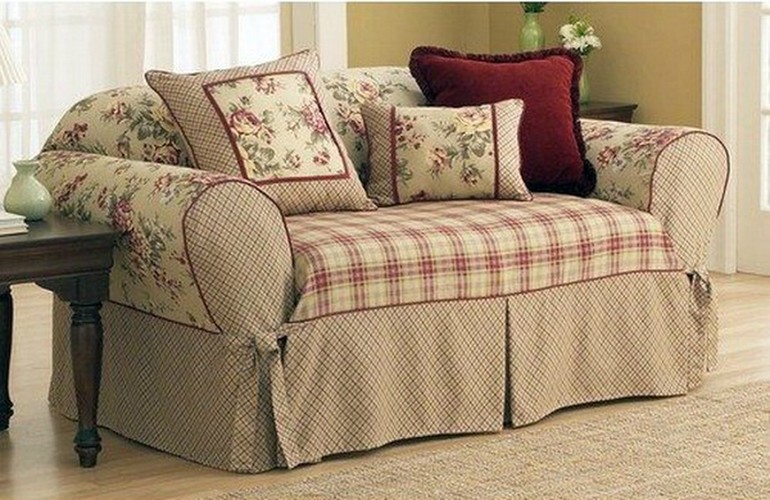
The main purpose
Any furniture set is an important element of home comfort. The main disadvantage of sofas and armchairs is the rapid wear of the upholstery material and poor protection from traces of food, drinks, animal claws.
After the repair, the furniture may not fit the updated interior or just be bored. You can solve these problems if you know how to properly sew a cover on the sofa. The main features of the cape:
- It is part of a decorative element;
- protects the skin from contamination;
- helps to change the appearance of the sofa;
- allows you to fit old products into a new interior.
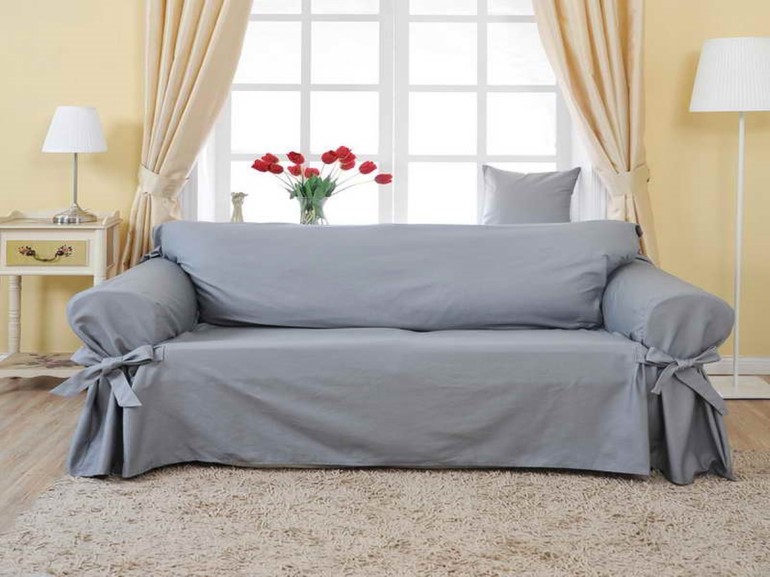
Modern upholstery materials have become more reliable, but they still have a limit on wear resistance. Therefore, covers will definitely be useful. In addition, DIY sewing can save you money.
Design and shape
Before you sew a universal cover on the sofa, you need to consider that the furniture has a different shape: shells, corner, rectangular. Sofa wraps must fit exactly in both shape and size.
All coatings have their functional purpose.. The main varieties:
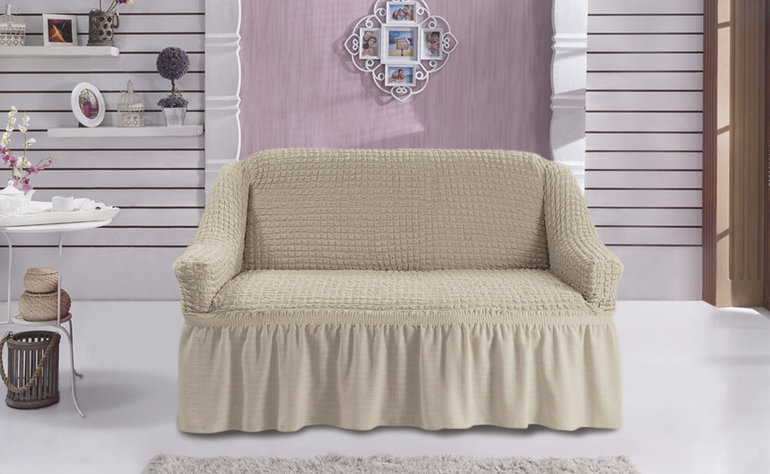
- Wraps with a "skirt" - frills, which are located at the bottom of the product. During sewing, they are also often made on the armrests. They look great in interiors made in rustic and provence styles.
- Covers on an elastic band can be easily fixed on a sofa, an armchair or an ottoman. These wraps are often made even without the aid of a pattern.
- Eurocases can be sewn from special textiles, which takes any form. This material consists of special elastic fibers. Careful measurements are not required during manufacture. Wraps are great for corner sofas.
As for the design, it must fit the general style of the room. Main directions:
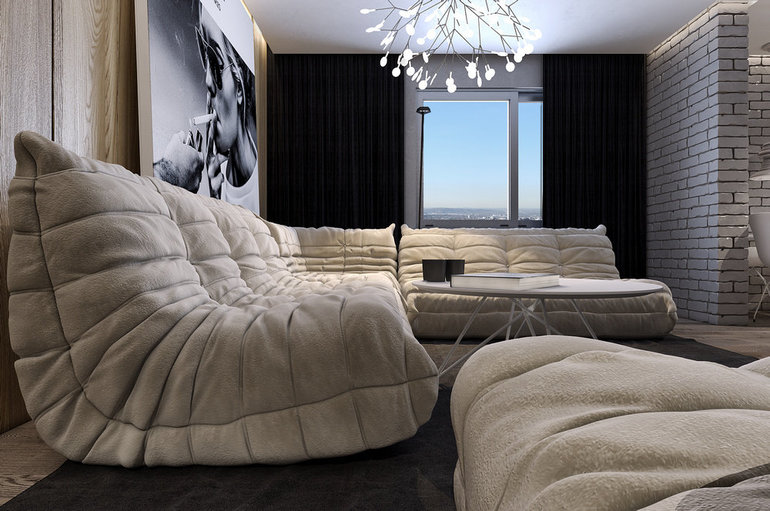
- Wraps in the English style completely cover the sofa, conveying the contours of the product. They will require accurate measurements. Often used with all kinds of mounts.
- Cloaks of complex shape are suitable for avant-garde premises. They are made of material with rich decor - prints, drawings, three-dimensional patterns, inscriptions.
- High-tech bedspreads should have a concise design. As a rule, these are monophonic wraps of neutral colors.
- Covers for loft style are simple. In this case, a minimum of decor is required. It is convenient to look after them. It is advised to choose non-marking materials.
- For country, simple wraps made of natural fabrics are suitable.
- Cotton covers are best suited for Art Nouveau.
- For minimalism, a cloak of restrained shades and a not very pronounced texture is suitable.
- For classics, you can use covers made with metal threads.
Fabric selection
Sewing work should begin with the selection of material. We must not forget that the main task of the fabric is to protect the skin from pollution. The best options:
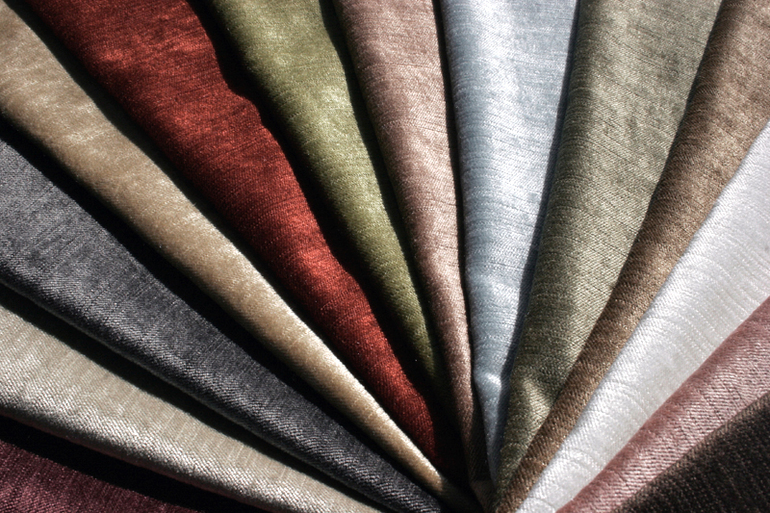
- Flock is a soft and delicate fabric. Composed of cotton and polyester. It has increased resistance to discoloration. Not afraid of the claws of pets and direct rays of the sun.It is characterized by water tightness.
- Velor is a pleasant to the touch and soft material. It is ideally smooth, decorated with embroidery or embossing. Does not activate statistical current and does not cause allergic reactions. You can use a washing machine.
- Cotton is a natural “breathable” fabric. Simple material to clean and care. Does not accumulate statistical current. Of the minuses: it is quickly worn out and crumpled strongly.
- Microfiber is a great suede substitute. Synthetic fabric has good strength. Easy to clean, does not cause allergic reactions.
- Jacquard - characterized by density and resistance to mechanical action. Not afraid of dry cleaning and washing machine.
- Chenill - has a soft plush texture, but at the same time it is wear-resistant and durable material. Not afraid of a washing machine and does not require special care.
When choosing a fabric for sewing a wrap, several key factors must be taken into account: the intended purpose of the room in which the furniture is located, as well as the age of the people who use the product.
Designers are advised to select the following materials:
- Bedroom - suitable materials that do not fade, are highly resistant to damage and environmentally friendly. For example, jacquard, microfiber, chenille.
- Living room - the fabric should be easy to clean, Art. The best materials: leatherette, genuine leather, microfiber, chenille.
- Nursery - pleasant to the touch and environmentally friendly fabrics are required. These materials should be easy to care for. Velor, cotton, jacquard are suitable.
Taking measurements
For sewing, you need to correctly measure the product to determine how many different elements will be needed for the pattern and what shape of the bedspread you need to sew.
For this purpose, you can use the old case, if it is preserved and you need to alter it. It is steamed into its constituent parts, and then the resulting elements are transferred to the surface of a new material.
The amount of fabric required for sewing is very simple to determine using this scheme: 2 sofa lengths are taken and 2 product widths are added to it.
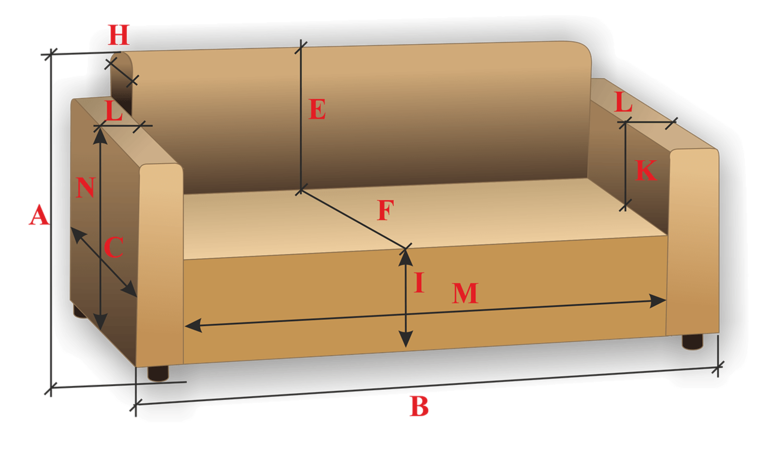
The main elements of the sofa that require measurements:
- Width - the size between the armrests.
- Length - the size from the point of contact with the floor of the rear of the furniture to the area where the front of the seat is in contact with the floor. That is, this is the height of the front of the back + height of the back of the back + seat height + depth of the sofa.
- The length of the armrest is the size between the end of the armrest and the point of contact with the back.
- The width of the armrests is the size from the area where the armrest is connected to the seat to the junction with the floor.
Manufacturing instruction
There are 3 manufacturing methods: using a pattern, with cutting in place, without using a pattern.
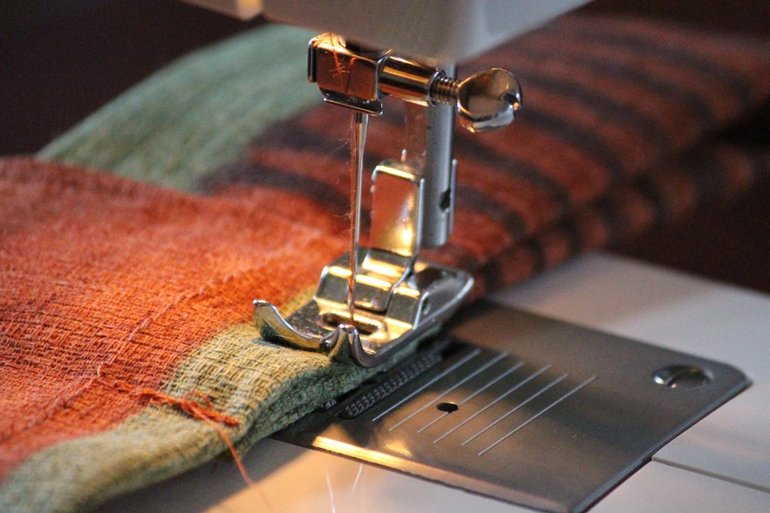
Sewing a cover with a cut in place is quite simple. This does not require a significant consumption of material and leaves a minimum of waste during operation (no more than 15%). The method is only suitable for sofas in a standard form. According to this variant of cutting, a cloak is sewn on products without armrests (with the transformation mechanism “accordion”, “book”).
A cover with an elastic band can be made without using a pattern. For him, a lot of material is needed, from the calculation: length - equal to three sofa lengths, fabric width - 5 seat widths.
For beginners, it is best to start cutting fabric for a direct sofa at the beginning. You can train on material that is in excess (for example, old curtains).
You will also need to prepare certain tools:
- sewing needles, which fix the parts of the paper pattern on the material of the future wrap;
- sharp scissors;
- measuring tape;
- sewing machine;
- chalk for marking on the material;
- pencil for marking on paper.
Pattern of elements
Before you sew the cover for the sofa with your own hands, you need to make a pattern of each element. Measurements are transferred to graph paper, taking into account the direction of the equity lines.After that you need to do the same on the fabric using chalk. The template is applied on the wrong side of the material.
Old newspapers or a carbon paper are often used for patterns, with which the constituent elements are pasted, their contours are outlined, all parts are cut with scissors. After they are connected and attached with tape. Such a pattern is adjusted directly on the spot: the joints are fixed with tape, and the missing sections are enlarged with newspaper sheets.
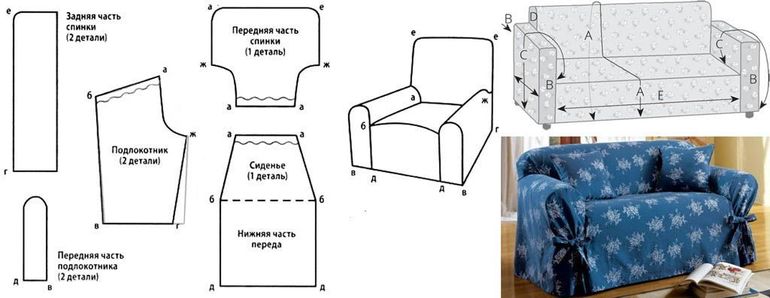
When everything is docked, they proceed to cutting into fabrics:
- The material must be ironed.
- The cotton and wool must be washed so that they shrink, and the future cover is not reduced in size.
- After the fabric is laid face down.
- Drawings are fixed with needles.
- Chalk outlines of the contours of the pattern. Having retreated by about 3 cm, you need to draw a second line and make a cut along it.
So get the cut parts and proceed directly to sewing.
Sewing steps
Sewing begins with a basting. The step-by-step instruction includes 8 actions:
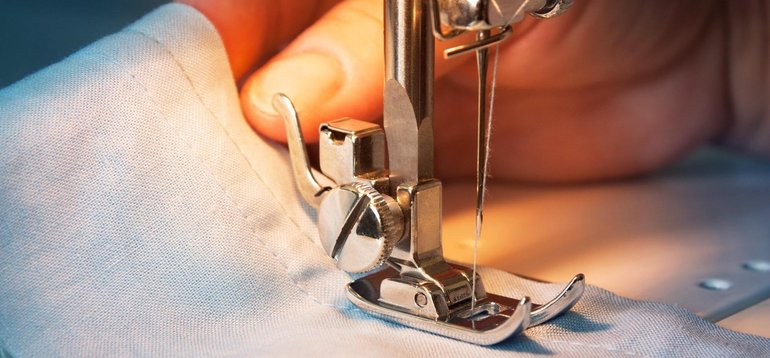
- To connect the received elements with an estimated seam.
- Try on the sofa.
- Determine the compliance of the parameters of the cloak with the dimensions of the furniture.
- Sewing items on a sewing machine.
- Overlock the seams inside.
- Open and sew the lining, if necessary, sew it to the cloak.
- To process edges of a cover.
- Decorate with decor.
The last grinding of all elements takes approximately 45-60 minutes. The difficulty is that all the parts come out massive and can hardly move under the needle.
Sewing capes on a corner sofa is considered a more difficult task. There are several manufacturing methods:
- If the corner part is plug-in, then the pattern is done separately at the corner of the sofa and the “wings”. After all the elements are stitched together.
- If the corner part is attached, then five capes will need to be sewn: on the main and attached section, on 2 armrests and a back.
When sewing elements, it is best to use a pleat. So you can mask the interface.
Decor Methods
As a decor, you can choose ribbons, bows, decorative piping, laces, applique, patch. Such decor can mark the flaws allowed in the manufacture.
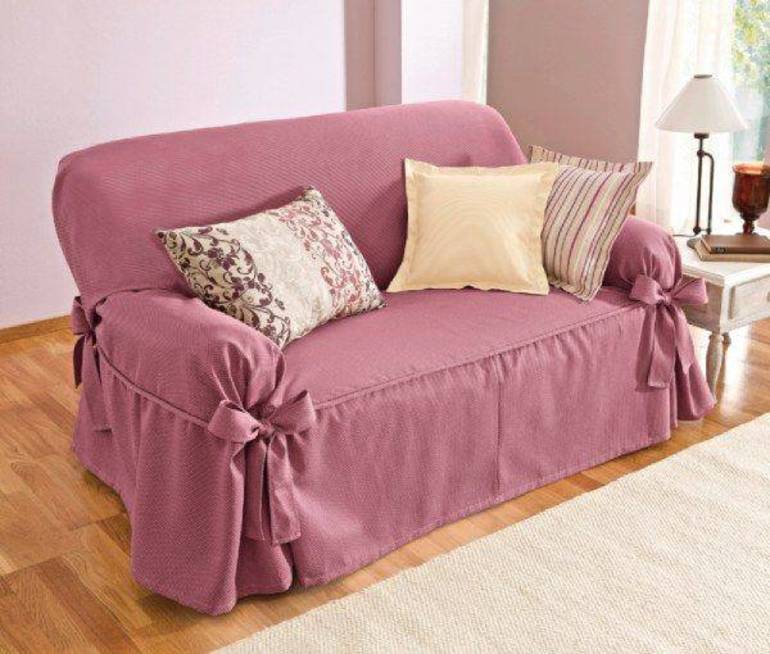
Now in specialized stores you can easily purchase any decorative elements. But when sewing products with their own hands, it is better to make jewelry yourself.
Pursuing the decor, you need to consider which room the furniture is in and who will operate it. If the furniture is for the kitchen, then the decor can not be done at all. If the sofa is in the nursery, then you should not decorate it with hard and small elements.
A wonderful and functional decoration will be decorative pillows. Themed trio, made in the same style, looks very beautiful: a cloak on a sofa, decorative pillows and curtains.
- How to choose a vacuum cleaner taking into account the characteristics of the house and coatings?
- What to look for when choosing a water delivery
- How to quickly create comfort at home - tips for housewives
- How to choose the perfect TV - useful tips
- What to look for when choosing blinds
- What should be running shoes?
- What useful things can you buy in a hardware store
- Iphone 11 pro max review
- Than iPhone is better than Android smartphones



